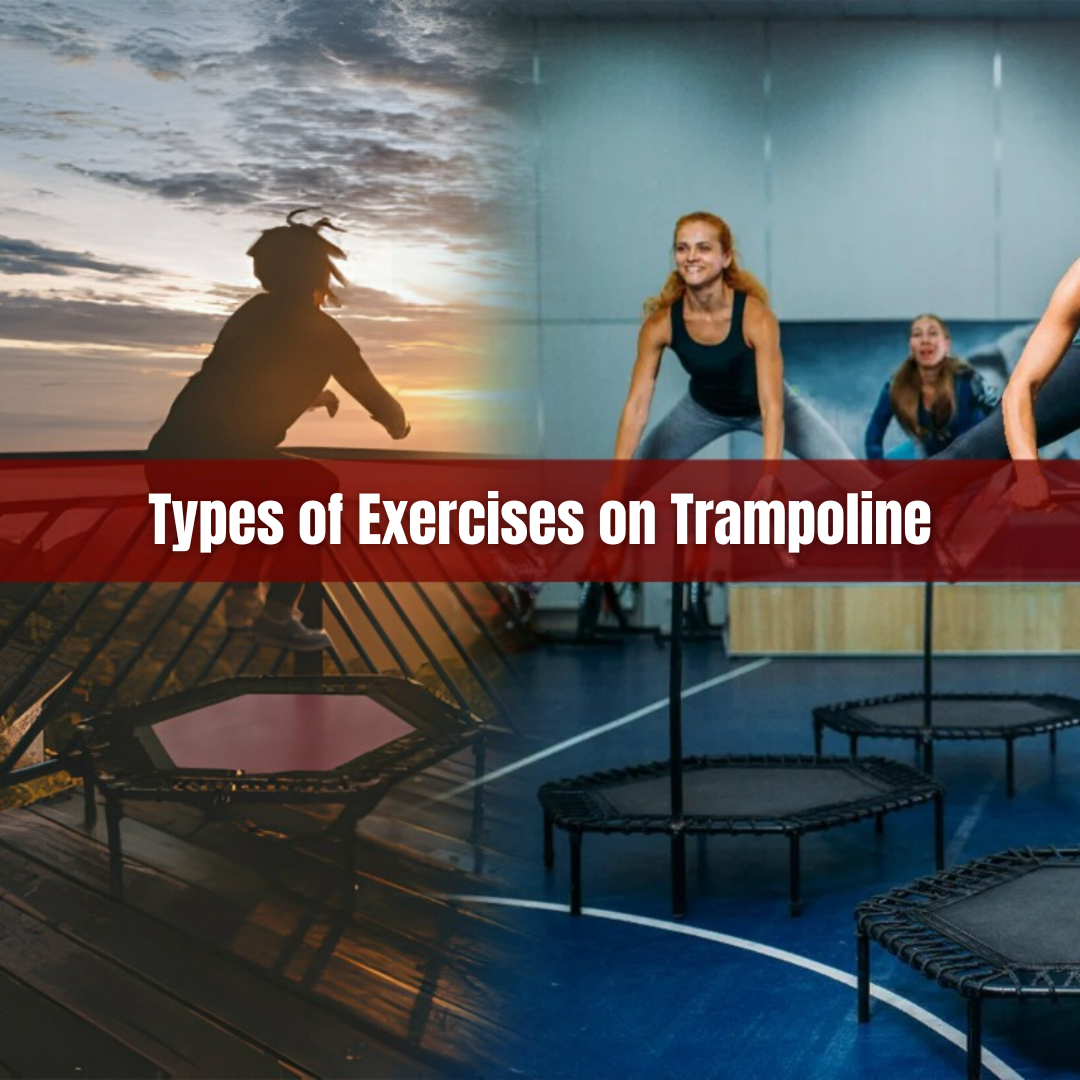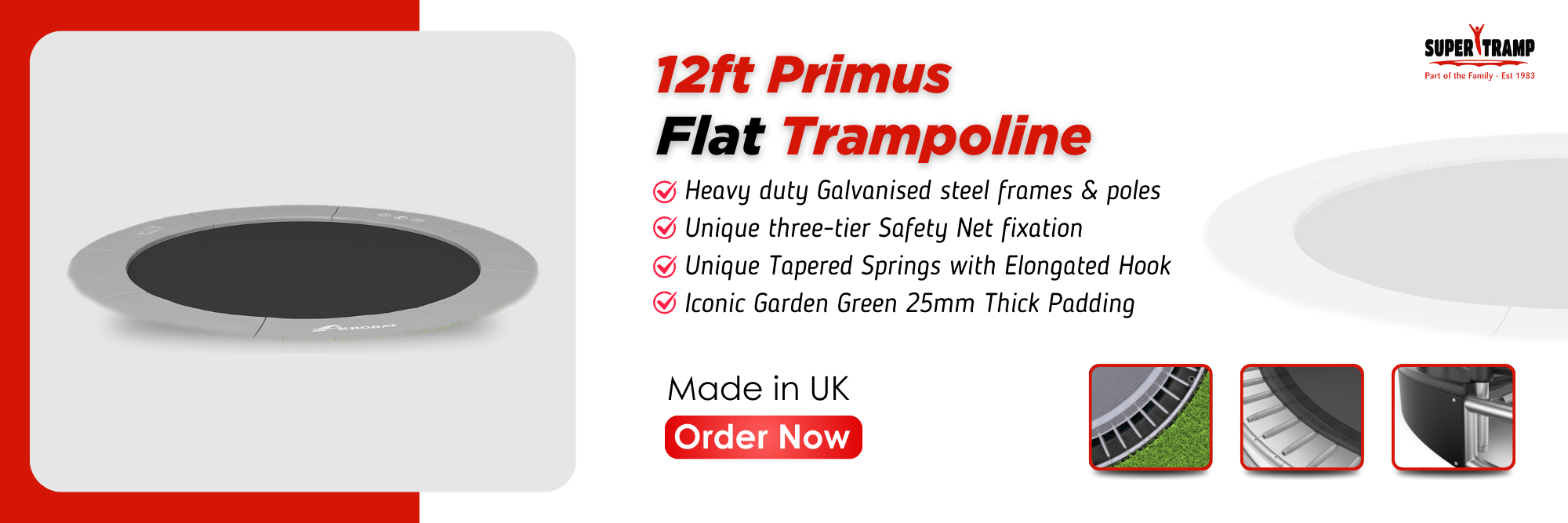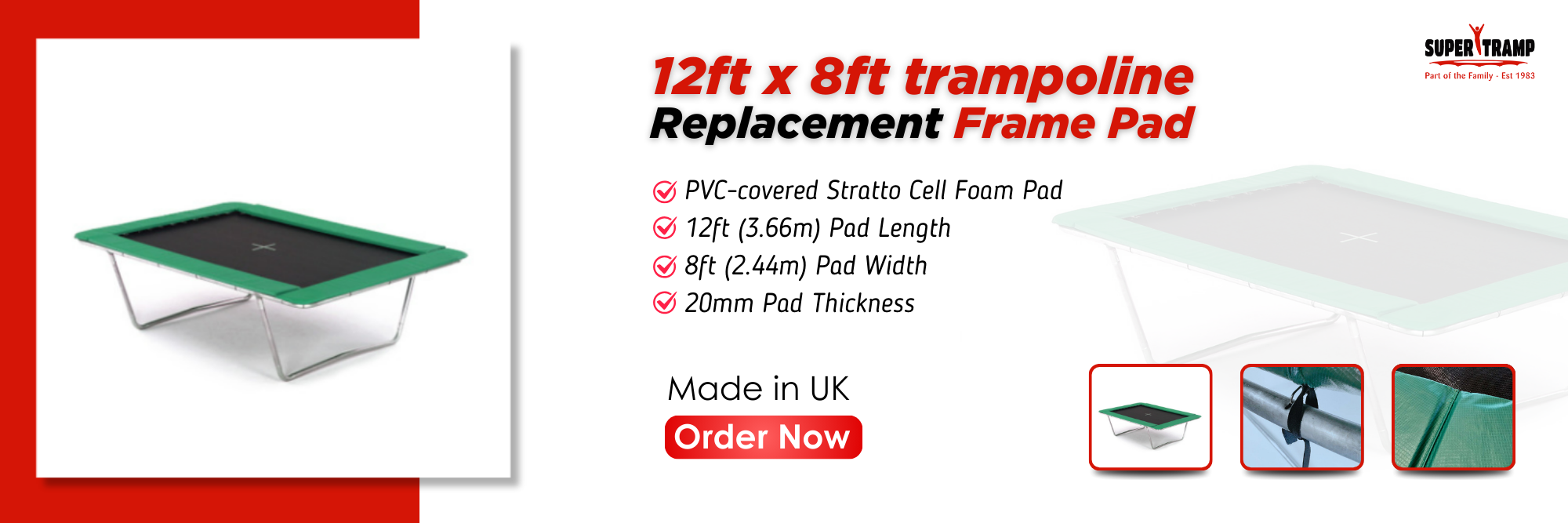
Trampolines have become increasingly popular in back gardens over the last decade. While trampolining is a fun activity for all ages, did you know it can also provide some brilliant health benefits, including weight loss?
Table of Contents
ToggleUnlike jogging or aerobics which can put stress on your joints, trampolining provides a low-impact workout. The springy surface absorbs up to 80% of the shock, reducing the risk of injuries. This makes it ideal for people who are overweight or have joint problems.
Jumping on a trampoline provides an intense cardio workout. In just 30 minutes of trampolining, a 70 kg person can burn over 200 calories. Do that a few times a week and you’ll blast fat in no time. The key is to keep jumping for at least 10-15 minutes at a time to get your heart rate up and maximise the calorie burn.
In this blog, you will find out if trampolines really help in reducing weight and fat in the body or not.
Understanding Weight Loss

Carrying around too many extra pounds puts strain on your body and internal organs, and can increase the risk of health issues like diabetes, heart disease and joint problems. Losing weight, even just 5-10% of your body weight, can help lower blood pressure, improve cholesterol levels and decrease the risk of disease. The key is making long-term lifestyle changes to eat healthier and move more.
Exercise is essential for weight loss
Dieting alone usually doesn’t cut it. To lose weight and keep it off, you need to add in regular exercise. Using a trampoline for rebounding is an easy, low-impact form of exercise that provides an effective cardio workout. Just 15-30 minutes a day 3 times a week can help create a calorie deficit to lose about 1-2 pounds per week.
Rebounding on a trampoline helps you burn calories, build muscle and boost your metabolism. The change in gravitational forces during each bounce helps strengthen your muscles and bones. It’s also easy on the joints since the trampoline mat absorbs up to 80% of the impact. So you get an intense workout on the trampoline with less stress on the body. The variability and instability of the trampoline surface also engages your core muscles with each bounce.
Watch your calorie intake
Most experts recommend reducing your intake by about 500-1000 calories per day to lose about 1-2 pounds per week. Focus on lean proteins, high-fibre whole grains, fruits and vegetables. And watch your portion sizes. Eating smaller meals and healthy snacks throughout the day can help you feel full and reduce cravings.
With regular exercise on a trampoline and a balanced diet, you absolutely can achieve safe and sustainable weight loss. The key is making long-term changes you can stick with to get results that last.
Benefits of Trampoline Exercise

Jumping on a 12ft trampoline is a great way to improve your cardiovascular health. Just 10-15 minutes of bouncing can raise your heart rate and increase blood flow, providing an aerobic workout. Studies show trampolining can improve oxygen consumption and heart health. The changing gravitational forces during jumping help circulation and strengthen your heart.
Burn Calories
A 150-pound person can burn over 200 calories in just 30 minutes of trampolining. The higher and more intense you jump, the more calories you’ll burn. Doing bounces, tucks, and twists will increase your calorie burn. Interval training, like alternating between high-intensity bouncing and rest periods, can maximise your calorie burn.
Full-Body Workout
Trampolining works your entire body, from your legs to your core to your arms. It helps build strength and balance. The buoyancy of the trampoline reduces stress on your joints while still providing resistance to help tone your muscles. Bouncing works your legs, glutes, and core. Doing exercises like jumping jacks, high knee runs, and tucks on the trampoline will also work your shoulders, chest, and back.
Trampolining provides an easy, low-impact way to get in shape and stay active. The variety of benefits make it an ideal exercise for both cardio and strength. Even just jumping at your own pace a few times a week can have significant health benefits. Your heart, muscles, and waistline will thank you for it.
Types of Exercises on a Trampoline:

The great thing about trampolines is that jumping on one provides an excellent cardio workout. Doing basic exercises like jumping jacks or running in place for just 10-15 minutes can provide benefits like improved stamina, stronger heart and lungs, and calorie burning.
Strength training
In addition to cardio, a trampoline can be used for bodyweight strength exercises like squats, lunges, burpees, and triceps dips using the trampoline frame. The unstable surface of the trampoline challenges your core muscles to stabilise your body. Be very careful when first attempting strength exercises on a trampoline until you get used to the different balance requirements.
Core exercises
Your core muscles get a workout just from bouncing and balancing on a trampoline, but you can also do focused core exercises like the trampoline plank or sit-ups. For the trampoline plank, place your forearms on the trampoline surface with your body in a straight line from your head to heels and hold. Sit-ups on a trampoline require extra control and balance to curl your upper body forward and back while stabilising your lower body.
High Intensity Interval Training
For an intense cardio challenge, try doing intervals of exercises like burpees, jumping jacks, or tuck jumps on your trampoline. Start with doing each exercise for 1 minute, then rest for 30 seconds. Repeat the cycle several times. This type of high intensity interval training provides an afterburn effect that continues to burn calories for hours after your workout. Be very careful when first attempting HIIT on a trampoline as the intensity can increase your risk of losing balance or control, while using a safety enclosure for added safety.
A trampoline provides a fun way to get exercise and the instability under your feet engages your core muscles with every bounce. Start slowly, focus on balance, and have fun with it! In no time, you’ll be getting an excellent full body workout right in your own backyard.
Factors Influencing Weight Loss on a Trampoline

To lose weight on a trampoline, aim for 3-4 sessions of 30-45 minutes each week. The more frequently you bounce, the more calories you’ll burn and the faster you’ll see results. At the same time, rest days in between sessions are important for your muscles and joints. Find the right balance for you.
Mix Up Your Workouts
Doing the same basic bounces repeatedly can get boring and limit results. Mix in exercises like jogging in place, tuck jumps, twisting jumps and straddle jumps. This challenges your body in new ways and incorporates more muscle groups. You can also try bouncing to upbeat music for extra motivation. The more you vary your routine, the more you’ll benefit.
Eat Right and Stay Active
Trampolining alone likely won’t lead to weight loss. You need to combine it with a balanced diet low in processed foods and calories. Aim for nutritious whole foods, lean proteins and lots of fruits and veg. Also, try to increase your general activity level. Take the stairs when possible, go for walks on your off days and do light exercise like yoga. Together, diet, an active lifestyle and trampolining can help you achieve your goals.
Safety Considerations

Only one jumper at a time
Never have more than one person jumping on the trampoline at once. This can lead to collisions that cause sprains, fractures, and head injuries. Take turns jumping and always wait until the previous jumper has exited the trampoline before entering.
Learn proper technique
Before letting kids on the trampoline, teach them basic jumps and safety rules. Show them how to land with knees bent to absorb impact, and how to stop themselves from bouncing too high by bending their knees on ascent. Learn how to control the bounce and have proper form for any somersaults or tricks before attempting them.
Use safety padding
Place thick trampoline padding over the springs, hooks, and frame of the trampoline. This protects jumpers from impact injuries if they land near the edge. You should also consider using a safety net that encloses the trampoline. Make sure any netting is properly secured to the ground around the trampoline.
Adult supervision
An adult should always supervise trampoline use, especially for children. Spotters can help guide proper technique, ensure only one person jumps at a time, and respond quickly in case of falls or injuries. Close adult supervision is especially important for younger or beginner jumpers.
Remove jewellery and tie back long hair
Remove any loose clothing, jewellery, glasses or hair ties before jumping. Long hair should be tied up and out of the face to avoid tangling or pulling. Bare feet are also best for balance and grip.
Following these safety guidelines and using proper technique and adult supervision, trampolining can be an enjoyable activity for people of many ages. But remember—safety comes first, so take it slow and follow the rules to avoid injury.
Conclusion
Trampolining is a good way to shed some weight and get fit. It’s gentler on your joints but still gives your heart and lungs a good workout. Just make sure to stay safe – use the safety pads, avoid tricks you can’t handle, and don’t overdo it. Start slow and build up. The main thing is to have fun bouncing! It doesn’t feel like a chore like some other exercises. And with the calorie burn of jogging without the joint strain, trampolining can help you shape up and slim down. Give it a go and see if a rebounder is right for you. Just be sure to make it part of a balanced routine. Now get bouncing and start feeling those benefits!
DON'T MISS...
- How to Safeguard Your Garden Trampoline Area
- What You Need to Know About Safety Standards for a Commercial Trampoline
- The Science Behind a Performance Trampoline: What Sets Them Apart
- What is The Difference Between Consumer Trampolines and Commercial Trampolines?
- Trampoline Park Spares: Exploring The Latest Innovations and Future






